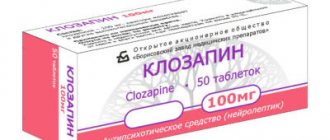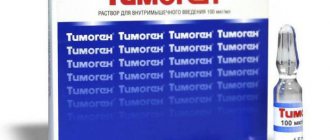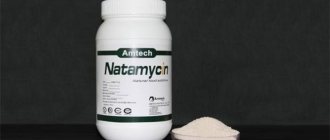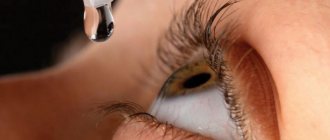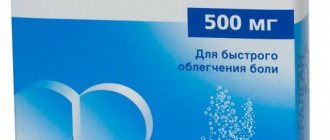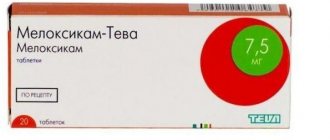Pharmacodynamics and pharmacokinetics
The antibacterial properties of Biseptol 480 are a consequence of the complementary combination effect of its two active drugs - sulfamethoxazole / trimethoprim ( co-trimoxazole ), which are in a 5/1 ratio.
Sulfamethoxazole, through competitive antagonism with para-aminobenzoic acid, inhibits the replication of folic acid , that is, it exhibits bacteriostatic effectiveness.
The action of trimethoprim is aimed at inhibiting bacterial dihydrofolate reductase , which, depending on the situation, can be either bacteriostatic or bactericidal.
Thanks to two mechanisms of action, co-trimoxazole prevents two successive phases of the biosynthesis of purines , and then nucleic acids , which are required for the normal development of many microorganisms .
The antibacterial activity of co-trimoxazole extends to the following pathogenic or opportunistic bacterial strains : Brucella spp., Pasteurella spp., Neisseria meningitidis, Yersinia spp., Streptococcus spp., Neisseria gonorrhoeae, Staphylococcus spp., Escherichia coli, Bacillus anthracis, Vibrio cholerae, Haemophilus influenzae, Listeria spp., Bordetella pertussis, Nocardia asteroides, Proteus spp., Enterococcus faecalis, Salmonella spp., Francisella tularensis, Klebsiella spp., Mycobacterium spp., Citrobacter, Legionella pneumophila, Enterobacter spp., Providencia, Chlamydia spp., Serratia marcescens; some strains : Pseudomonas, Shigella spp., Morganella spp., Pneumocystis carinii; pathogenic fungi : Leishmania spp., Coccidioides immitis, Actinomyces israelii, Histoplasma capsulatum; protozoa : Toxoplasma gondii, Plasmodium spp.
to the effects of co-trimoxazole : Treponema spp., Corynebacterium spp., Leptospira spp., Pseudomonas aeruginosa, mycobacterium tuberculosis , viruses .
In the intestines, Biseptol 480 suppresses the functionality of E. coli , reduces the internal synthesis of riboflavin , thiamine , nicotinic acid and other B vitamins . Therapeutic effectiveness continues for 7 hours.
Cmax of co-trimoxazole , observed 60 minutes after its intravenous administration, is achieved faster and shows higher values than with oral administration of the drug. There were no significant differences in plasma content, T1/2 and elimination after oral administration or intravenous administration of Biseptol 480.
Co-trimoxazole is characterized by good distribution and rapid penetration into biological fluids and tissues of the human body. Passes through the placental barrier , the BBB and enters the milk of a nursing mother. In urine and lungs it forms concentrations exceeding plasma concentrations. To a lesser extent, it accumulates in bronchial secretions , tissues and secretions of the prostate gland , interstitial fluid, vaginal discharge , middle ear exudate, bile , cerebrospinal fluid , bones, aqueous humor of the eye, saliva , breast milk .
The distribution of the two active drugs is different: the placement of sulfamethoxazole is observed only in the extracellular space, and the placement of trimethoprim both in the extracellular space and inside cells. Sulfamethoxazole to plasma proteins by 66%, and trimethoprim by 45%. Metabolic transformations of both drugs take place in the liver. Sulfamethoxazole preferentially metabolized to release inactive acetylated derivatives .
The main excretion of the drug is carried out by the kidneys, both through tubular secretion and filtration . Over the course of 72 hours, up to 80% of the drug is excreted in the form of metabolites of trimethoprim and 20% of sulfamethoxazole are excreted unchanged . A small amount of co-trimoxazole is excreted by the intestines. T1/2 of trimethoprim varies between 10-12 hours, and sulfamethoxazole - within 9-11 hours. In children, T1/2 is much less and is determined by age (up to 12 months - 7-8 hours, from 1-10 years - 5-6 hours). T1/2 of co-trimoxazole increases in elderly people and patients with kidney pathologies
Medicinal properties
"Biseptol" (480, 120 and 240 mg) is a broad-spectrum antimicrobial drug that belongs to the sulfonamide group. The combination of active ingredients prevents the synthesis of folic acid, which is responsible for metabolic processes in microbial cells, as well as their division. Co-trimoxazole does not kill pathogens of various diseases, but limits their reproduction, giving the immune system the opportunity to independently cope with pathogens. This explains the absence of a strong toxic effect during treatment with Biseptol.
The active substances of the drug quickly penetrate and distribute in the body. If a dropper is placed, the maximum concentration is achieved within an hour. When using tablets, this time increases. The main part of the drug is excreted in the urine within 72 hours, a small part in the feces.
The drug is able to cope with approximately 40 types of pathogenic microorganisms, including streptococcal and staphylococcal infections, Vibrio cholerae, toxoplasma, salmonella, chlamydia, E. coli and others. The drug has no effect on anaerobic and mycobacteria, as well as viruses.
"Biseptol" is used for primary and secondary prevention of pneumocystis and toxoplasmosis in HIV carriers.
Indications for use
Biseptol in ampoules is indicated for infusion in diseases of infectious etiology of various systems of the human body.
Genitourinary system:
- inguinal granuloma;
- urethritis;
- gonorrhea;
- pyelonephritis;
- lymphogranuloma venereum ;
- cystitis;
- chancroid ; _
- pyelitis;
- epididymitis;
- prostatitis.
Respiratory system:
- bronchiectasis;
- pneumocystis pneumonia;
- bronchitis (acute/chronic);
- pleural empyema;
- lobar pneumonia;
- lung abscess;
- bronchopneumonia.
ENT organs:
- laryngitis;
- scarlet fever;
- otitis media;
- angina;
- sinusitis.
Digestive system:
- cholangitis;
- typhoid fever;
- cholecystitis;
- dysentery;
- paratyphoid;
- cholera;
- salmonella carriage;
- gastroenteritis (arising due to exposure to enterotoxic strains of Escherichia coli ).
Skin:
- acne;
- wound infections and abscess;
- pyoderma;
- furunculosis;
- postoperative/post-traumatic infections.
Other:
- whooping cough;
- sepsis;
- malaria;
- acute brucellosis ;
- South American blastomycosis;
- toxoplasmosis;
- osteoarticular infections;
- osteomyelitis.
Description and use of the drug
Is Biseptol an antibiotic or not? No. Biseptol belongs to a fundamentally different group of drugs - antibacterial compounds based on sulfonamides.
They differ from antibiotics, firstly, in their origin: sulfonamides are exclusively artificial agents, synthesized in a chemical factory and are not found in nature, while all antibiotics, without exception, have a natural or, in extreme cases, a semi-synthetic base.
Secondly, sulfonamides have a fundamentally different mechanism of action: they are integrated into the structure of pathogenic microorganisms or protozoa and replace para-aminobenzoic acid in their protein, which makes it impossible for bacteria, protozoa and even some types of fungus to reproduce.
Although the fungus is in most cases resistant to these substances, this is especially true for the pathogenic fungus of the genus Candida. Moreover, sulfonamides, as well as antibiotics, can create (under certain conditions) a favorable environment for the occurrence of candidiasis.
The action of biseptol is provided by 2 active synthetic compounds: sulfamethoxazole, which has an inhibitory effect on bacteria and protozoan single-celled organisms, and trimethoprim, a synergistic substance that enhances the therapeutic effect of the main ingredient.
Biseptol is absorbed into the blood within 1-2 hours, dissolving in the stomach. This drug reaches its maximum concentration in the blood 6-7 hours after the patient takes the drug. The main route of elimination is the urinary tract.
Many pathogens are sensitive to the main component, sulfamethoxazole, including:
Causative agents of toxoplasmosis, brucellosis, chlamydia, salmonellosis.- Streptococci and staphylococci.
- Gonococci.
- Neisseria.
- Listeria.
- Proteus.
- Hemophilus.
Therefore, the use of Biseptol is advisable if a person has inflammation of the ENT, gastrointestinal tract, genitourinary system and others caused by a bacterial infection.
Note: for diseases caused by viruses or fungal infections, for example colds or candidiasis, the use of Biseptol is pointless and useless, because it has no effect on viral and mycological life forms. If, for example, you have a cough, then Biseptol can only help if the cause of the disease is bacteria. Also, this drug is ineffective against spirochetes and the causative agent of tuberculosis.
What does the drug Biseptol help with? Many people try to take Biseptol for a cold cough, but, as mentioned above, in most cases this is not justified. However, it is recommended to take Biseptol if:
- Toxoplasmosis.
- Brucellosis.
- Osteomyelitis (in complex therapy).
- Infectious diseases of the respiratory system and ENT organs, incl. for sore throat, otitis, tonsillitis, sinusitis, pneumonia, and colds caused by bacteria. Biseptol can be used for bronchitis.
Infections of the urinary system and genital organs, such as cystitis, pyelonephritis, urethritis, including gonorrheal prostatitis, salpingo-oophoritis, as well as chancroid.
In addition, the list of indications for the use of Biseptol includes bacteriological infections of the stomach, intestines, etc., such as:
- diarrhea,
- typhoid and paratyphoid fever,
- dysentery,
- cholera,
- poisoning.
It can be successfully used for skin diseases such as furunculosis and pyoderma, as well as for inflammation of the brain - meningitis, wound infections, incl. after surgery, etc.
Biseptol is prescribed for the prevention of diseases such as Pneumocystis pneumonia in patients suffering from HIV/AIDS.
Contraindications
The use of ampoule Biseptol 480 is absolutely contraindicated for:
- personal sensitivity to trimethoprim / sulfonamides ;
- folic acid deficiency );
- pregnancy;
- aplastic anemia ;
- breastfeeding;
- B12 deficiency anemia;
- leukopenia;
- hyperbilirubinemia in children;
- agranulocytosis;
- severe / liver pathologies ;
- glucose-6-phosphate dehydrogenase deficiency;
- under the age of 6 years.
With extreme caution, the administration of Biseptol 480 injection concentrate is possible when:
- folic acid deficiency ;
- diseases of the thyroid gland;
- bronchial asthma;
- impaired renal / liver .
Myths about Biseptol and other sulfonamides
1 Myth - Sulfonamides are practically harmless and have no side effects
Self-medication with Biseptol and other sulfonamides is completely unacceptable. They have a lot of side effects, primarily they have a toxic effect on the kidneys and liver, are dangerous for pregnant women, can cause allergic reactions, aplastic anemia, etc. However, the risk of developing intestinal dysbiosis when using them is significantly lower than when using antibiotics. Biseptol is prohibited for use in children under 12 years of age in Europe and the USA.
Co-trimaxazole is a leading drug in life-threatening side effects. The Medical Academy of Denmark found that Biseptol (Co-trimaxazole) has a depressant effect on hematopoiesis, leading to a condition where the bone marrow does not produce vital leukocytes - granulocytes, i.e. to aplastic anemia. This is a severe disorder of hematopoiesis, for which patients die within a few months without treatment. Aplastic anemia provokes complete atrophy of the bone marrow and in terms of the severity of the disease it is on par with blood cancer.
2 Myth - Biseptol reduces the risk of complications from influenza and ARVI
Biseptol does not prevent complications of influenza, as many believe, and is not used to treat influenza and viral diseases (see Symptoms of influenza in adults, how to recover from the flu).
3 Myth - Sulfonamides are very harmful, so they should be used for 2-3 days until it becomes easier, and it is no longer worth poisoning the body
Bacterial resistance to sulfonamides develops quite quickly and it is not permissible to interrupt the course prescribed by the doctor in therapeutic doses. This is fraught with the development of resistance to sulfonamides in the future (see how to take antibiotics correctly).
4 Myth - Biseptol in tablets and capsules can not be washed down with water, but chewed or swallowed whole
Since drugs in this group can cause renal dysfunction, when using them you should drink plenty of fluids, preferably alkaline ones. Taking Biseptol can in some cases clog the urinary tract with insoluble crystals, especially in acidic urine, so you should take the tablets and drink plenty of fluids.
Side effects
Digestive system:
- glossitis;
- nausea with or without vomiting;
- anorexia;
- pseudomembranous enterocolitis ;
- diarrhea;
- gastritis;
- stomatitis;
- abdominal pain;
- increased activity of liver transaminases;
- hepatitis;
- cholestasis;
- liver necrosis.
Nervous system:
- dizziness;
- aseptic meningitis ;
- apathy;
- depression;
- tremor;
- headache;
- peripheral neuritis .
Respiratory system:
- pulmonary infiltrates;
- bronchospasm.
Hematopoietic system:
- megaloblastic anemia;
- neutropenia;
- hypoprothrombinemia;
- agranulocytosis;
- thrombocytopenia;
- leukopenia.
Urinary system:
- hematuria;
- polyuria;
- hypocreatininemia;
- interstitial nephritis ;
- impaired renal function;
- increase in urea;
- crystalluria;
- toxic nephropathy with anuria and oliguria.
Musculoskeletal system:
- myalgia;
- arthralgia.
Allergic manifestations:
- skin itching / rash ;
- temperature increase;
- redness of the sclera;
- photosensitivity;
- exfoliative dermatitis;
- olipmorphic erythema;
- allergic myocarditis ;
- Quincke's edema.
Local reactions:
- soreness;
- thrombophlebitis.
Biseptol 480 mg, instructions for use
Instructions for use of Biseptol 480 suggest the use of the concentrate exclusively for infusion therapy , after its preliminary dilution.
Injection of the drug is prohibited.
of sodium chloride (9%), Ringer or Dextrose are usually used . The preparation of the infusion mixture should be carried out immediately before its use, thoroughly mixing all the ingredients. The resulting solution is suitable for use for 6 hours.
Patients over 12 years of age are usually prescribed 2 ampoules (960 mg) of the drug per 250 ml of solvent, twice every 24 hours. In severe cases, it is practiced to use 3 ampoules (1440 mg) of Biseptol with 2-3 single infusions per day.
The daily dosage of the drug for patients from 6 to 12 years of age is calculated at the rate of 36 mg per kilogram of weight, administered twice a day in equal doses.
In case of renal failure (creatinine clearance 15-30 ml/min), the dose used should be halved.
"Biseptol", suspension
The suspension is intended for oral administration. Color ranges from white to light cream. Does not contain sugar. Has a light strawberry scent
Mode of application
Drink the suspension after meals with plenty of water.
Adults and children over 12 years of age: from 960 mg to 1440 mg (depending on the severity of the disease) every 12 hours.
The period of taking the drug for urinary tract infections is 10-14 days, for exacerbation of chronic bronchitis - 14 days, for travelers' diarrhea and shigellosis - 5 days.
For children, the dose is calculated based on the disease. Approximate dose 36 mg/kg per day.
The course of treatment for urinary tract infections and acute otitis media is 10 days, for shigellosis – 5 days. For severe infections, doses for children can be increased by 50%.
For acute infections, the minimum duration of treatment is 5 days; after the symptoms disappear, therapy is continued for 2 days.
After 7 days, changes are observed; if they do not occur, the dose is adjusted or the medication is changed.
960 mg every 12 hours drink suspension for the treatment of chancroid (7 to 14 days).
For women with acute uncomplicated urinary tract infections, a single dose of 1920-2880 mg is recommended, if possible in the evening after meals or before bed.
For pneumonia caused by Pneumocystis carinii - 30 mg per kg 4 times a day with an interval of 6 hours for 14-21 days.
For the prevention of pneumonia, adults and children over 12 years of age - 960 mg/day. For children under 12 years of age - 450 mg every 12 hours for 3 consecutive days every week.
For other bacterial infections, the dose is selected individually depending on individual indicators.
Overdose
In case of acute overdose of Biseptol 480, the following were observed: nausea , intestinal colic , vomiting, drowsiness , dizziness, fainting , headaches, fever , depression , crystalluria, visual disturbances, confusion , hematuria. In case of prolonged exposure to high doses of the drug, manifestations of thrombocytopenia , megaloblastic anemia , leukopenia, and jaundice .
The prescribed treatment is to cleanse the stomach and take large amounts of fluid. To enhance the excretion of trimethoprim urine acidification is practiced , to eliminate its effect on the bone marrow, intramuscular injection of calcium folinate in a daily dose of 5-15 mg, to activate erythropoiesis (if hematopoietic function is suppressed) intramuscular injection of folic acid in a daily dose of 3-6 mg. Typically, therapy for an overdose condition takes from 5 to 7 days. Hemodialysis may be used .
Interaction
Parallel administration of Biseptol with oral hypoglycemic drugs, Phenytoin Warfarin derivatives enhances their effect in terms of increasing prothrombin time and the formation of bleeding .
When co-trimoxazole and diuretics in elderly patients, the risk of thrombocytopenia .
Combined administration with Cyclosporine reduces plasma concentrations of the latter.
You should not combine Biseptol infusions with drugs that include bicarbonates .
Biseptol 480 enhances the anticoagulant effects of indirect coagulants, increases the effect of Methotrexate and hypoglycemic drugs.
Parallel administration of Rifampicin reduces T1/2 of trimethoprim .
Concomitant use of pyrimethamine greater than 25 mg per week increases the risk of megaloblastic anemia .
Combination with diuretics (mainly thiazide) increases the possibility of thrombocytopenia .
The effectiveness of Biseptol decreases with the simultaneous use of Benzocaine , Procainamide , Procaine and other drugs, the hydrolysis of which releases PABA.
Biseptol reduces the intensity of metabolism of Warfarin and Phenytoin , and therefore their effect is enhanced.
cross-allergic phenomena is possible with parallel administration of co-trimoxazole on the one hand and diuretics together with sulfonylurea on the other.
Barbiturates , Phenytoin , PAS can affect folic acid .
The effect of Biseptol is enhanced when taken in combination with salicylic acid .
Hexamethylenetetramine , ascorbic acid and other drugs that acidify urine increase the risk of crystalluria .
When used in parallel with Colesteramine , which reduces the absorption of co-trimoxazole , it should be taken 3-4 hours before or 60 minutes after taking Biseptol.
Therapy with Biseptol may reduce the reliability of oral contraceptives due to suppression of intestinal microflora and, as a result, a decrease in the enterohepatic circulation of hormones .
Pharmaceutical compatibility of Biseptol is observed with the following infusion solutions and their mixtures: Dextrose (5%); Ringer ; sodium chloride (0.9%); dextrose (4%) + sodium chloride (0.18%); dextran 70 (6%) + Dextrose (5%) or NaCl; dextran 40 (10%) + Dextrose or NaCl.
Compound
Co-trimoxazole consists of five parts sulfamethoxazole and one part trimethoprim. One tablet or ampoule contains (mg):
- Sulfamethoxazole
- Trimethoprim.
The tablets contain the following additional components: methyl and propyl parahydroxybenzoate, propylene glycol, polyvinyl alcohol, talc, magnesium stearate, potato starch.
The concentrate contains the following additional components: sodium hydroxide and metabisulfite, benzyl alcohol, propylene glycol, ethanol.
special instructions
In patients with immunodeficiency syndrome , when taking Biseptol for the treatment of Pneumocystis pneumonia, negative phenomena such as fever , skin rashes and leukopenia .
of sulfamethoxazole should be determined every 2-3 days . If its concentration exceeds 150 mcg/ml, therapy should be interrupted until the level decreases to less than 120 mcg/ml.
Long-term therapy requires systematic studies of blood counts and / liver functionality .
When using Biseptol to treat elderly patients, they are recommended to take parallel folic acid in a daily dose of 3-6 mg, which does not significantly affect the antimicrobial effectiveness of co-trimoxazole . Particular caution should be exercised when treating elderly patients with suspected underlying folate deficiency .
To prevent crystalluria, adequate diuresis .
The possibility of allergic and toxic manifestations of sulfonamides increases significantly with insufficient filtration capacity of the kidneys.
During treatment with Biseptol, it is better to avoid eating plant foods that include PABA (legumes, carrots, cauliflower, tomatoes, spinach).
During therapy with co-trimoxazole, you need to be careful about exposure to any type of ultraviolet radiation .
Biseptol 480 is not recommended for use for pharyngitis or tonsillitis caused by streptococcus pyogenes due to the prevalence of resistance of these strains.
Analogs
Level 4 ATC code matches:
Co-Trimoxazole
Bactrim
Biseptol
- Co-trimoxazole;
- Bactrim;
- Brifeseptol;
- Bi-Septin;
- Duseptol;
- Metosulfabol.
Reviews
Even in the recent past, Biseptol was very popular among doctors and was used very widely and quite effectively. Recently, there has been considerable controversy surrounding this drug, especially regarding its effectiveness and toxicity. The opinions of patients, as well as doctors, in this regard, are sometimes diametrically opposed, and therefore it is impossible to make an unambiguous conclusion about the advisability of using Biseptol at the moment. In this situation, it would be best to rely on the experience of your doctor, who will be able to expertly assess the painful condition and prescribe the appropriate treatment.
Biseptol or Azithromycin – which is better?
Manufacturer: Replek Pharm (Macedonia), Obolenskoe FP, Vertex, Dalkhimfarm, Ozone, etc. (Russia)
Release form: tablets, syrup, capsules
Active ingredient: azithromycin
Synonyms: Sumamed, Azitrox, Z-factor, Hemomycin, etc.
Azithromycin is a modern analogue from the azalide group. Advantage: taken once a day for 3–5 days, it has a broad spectrum antibacterial effect.
Indications for use of the analogue:
- infections of the ENT organs and respiratory tract;
- skin and soft tissue infections;
- erythema migrans.
Biseptol is an outdated antibacterial drug that is prescribed strictly according to indications and culture results. When choosing between it and Azithromycin, you should consult your doctor; however, the analog Azithromycin is more effective and safer.
Price Biseptol 480, where to buy
The price of Biseptol 480 fluctuates around 400-450 rubles.
- Online pharmacies in RussiaRussia
- Online pharmacies in UkraineUkraine
- Online pharmacies in KazakhstanKazakhstan
Pharmacy Dialogue
- Biseptol 480 tablets 480 mg No. 28Polfa
96 RUR order
show more
Pharmacy24
- Biseptol 480 No. 14 tablets Pub Yanitsky FZ, Polfa A.T., Poland
76 UAH.order - Biseptol 480 mg 5 ml N10 Warsaw Federal Plant, Poland
263 UAH order
- Biseptol 480 N20 tablets Pub Yanitsky FZ, Polfa A.T., Poland
88 UAH order
show more


